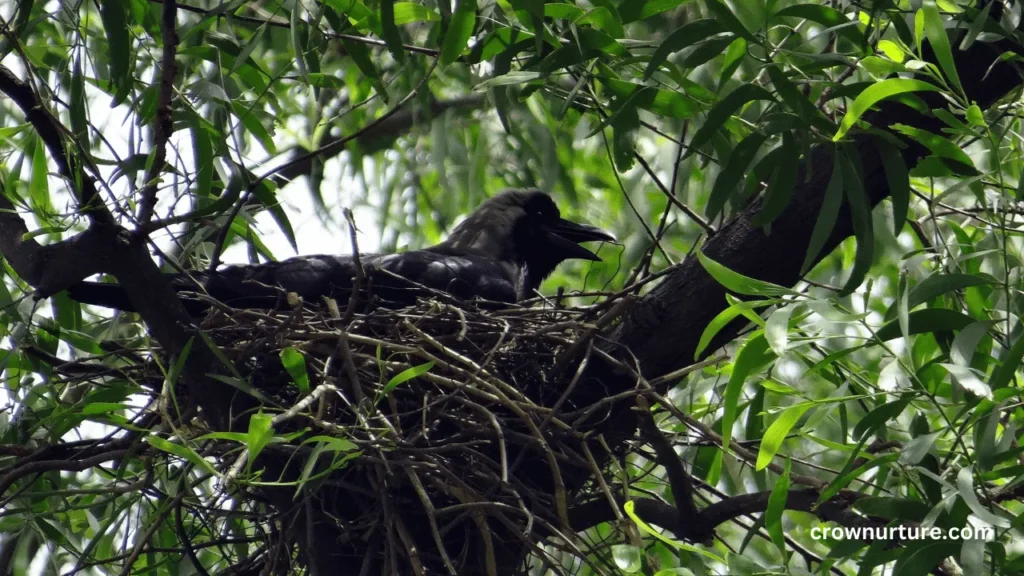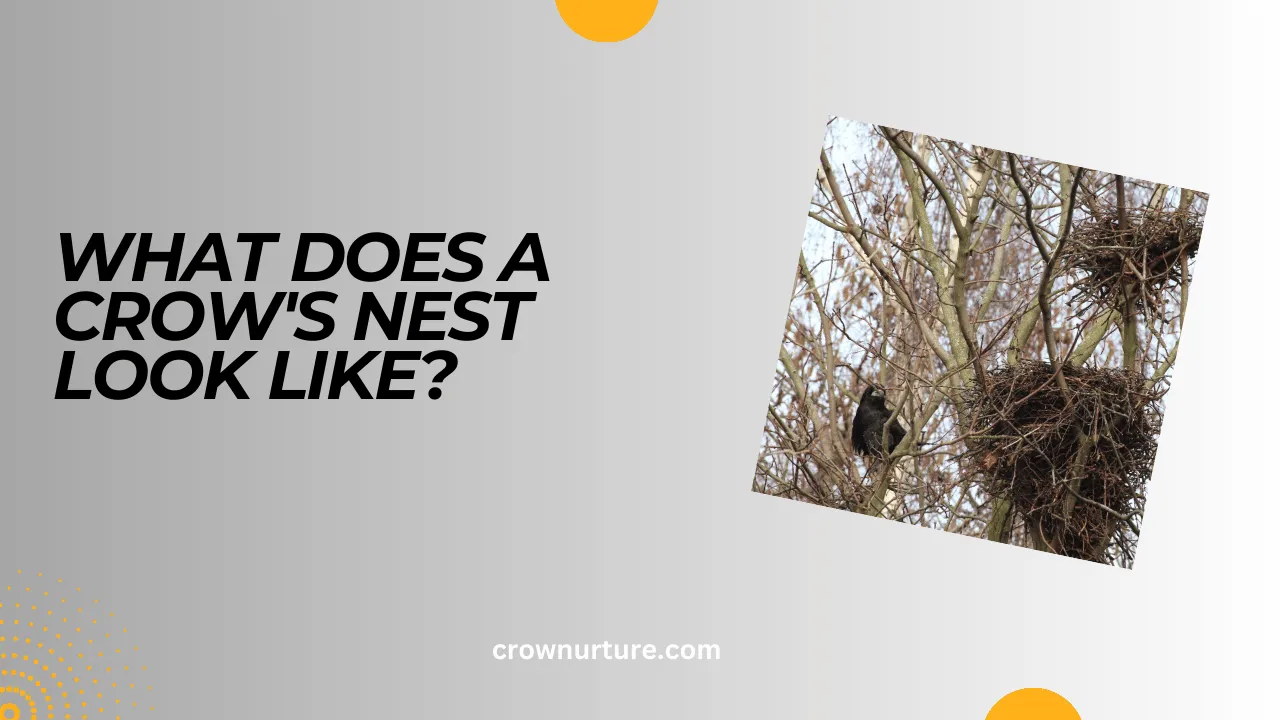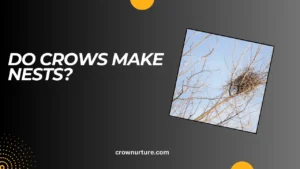High above in the trees or cleverly tucked away in urban landscapes, a crow’s nest is a testament to the ingenuity and resilience of these intelligent birds. These structures, though seemingly simple, are carefully crafted havens for raising the next generation of crows.
But have you ever wondered what exactly makes up a crow’s nest and why its design is so crucial for their survival? A crow’s nest is more than just a pile of sticks; it’s a masterpiece of nature’s engineering.
From the selection of materials to its strategic placement, every aspect of the nest reflects the adaptability and intelligence of these remarkable birds. Understanding how crows build and use their nests not only deepens our appreciation for these creatures but also helps us understand their role in the ecosystem.
In this article, we’ll explore the fascinating world of crow nests—what they look like, the materials used, where they are placed, and their importance in crow behavior. By the end, you’ll see that these nests are more than just shelters; they’re a window into the lives of one of nature’s smartest birds.

Contents
1. Nest Materials
- Twigs and Sticks: Crows primarily use twigs and sticks as the framework of their nests. These materials provide the necessary strength and structure to support the weight of their eggs and growing chicks.
- Other Materials: In addition to twigs, crows often incorporate softer materials like grass, leaves, moss, and feathers to line the interior, creating a comfortable space for their eggs and hatchlings.
- Regional Variations: The materials used can vary by location. For example, in urban areas, crows may include man-made items like string or scraps of fabric, showcasing their adaptability.
2. Nest Structure
- Bowl-Shaped Construction: Crow nests are typically bowl-shaped, providing a secure and protective environment for eggs. This design helps to keep the eggs from rolling out and offers some protection from the elements.
- Interior Lining: The inside of the nest is often lined with soft materials like animal fur, feathers, or fine grasses to cushion the eggs and keep them warm during incubation.
- Size and Weight: A crow’s nest is surprisingly large, measuring about 12–24 inches in diameter and weighing up to a few pounds.
3. Nest Placement
- Tree Selection: Crows prefer strong, tall trees for nesting, often selecting deciduous trees like oaks or maples for their sturdy branches and ample cover.
- Nest Height: Crow nests are usually placed high above the ground, often at heights of 10 to 60 feet, to reduce the risk of predation.
- Nest Orientation: The orientation of the nest is strategic; crows often choose locations that provide protection from strong winds and ample sunlight to keep the nest warm.
4. The Role of the Nest in Crow Behavior
- Breeding Season: Nest construction begins in early spring, coinciding with the breeding season. The nest serves as the central location for laying and incubating eggs, typically 3–7 per clutch.
- Incubation and Parenting: The nest is critical for incubation, where the female crow stays to keep the eggs warm while the male provides food. It also serves as a nursery for the chicks until they’re ready to fledge.
- Nest Defense: Crows are fiercely protective of their nests, employing vocal alarms, dive-bombing tactics, and group defense strategies to ward off predators like hawks and raccoons.
5. Human Impact on Crow Nesting
- Habitat Loss: The removal of trees and green spaces due to urban development has reduced nesting options for crows, forcing them to adapt.
- Urbanization: In cities, crows have become adept at building nests in unconventional locations like utility poles or building ledges, showing their remarkable adaptability.
- Human Interference: Disturbances like tree trimming during the nesting season or the removal of nests can negatively impact crows, disrupting their breeding cycle and reducing chick survival rates.
Conclusion
A crow’s nest is more than a simple structure—it’s a symbol of their intelligence, adaptability, and dedication to family. From carefully selecting materials to strategically placing their nests, crows demonstrate a level of resourcefulness that sets them apart in the bird world.
These nests play a vital role in every stage of a crow’s life, from incubation to fledging. By understanding their nesting habits, we not only appreciate their ingenuity but also become more aware of how human actions can impact their survival.
Whether in dense forests or bustling cities, crows continue to adapt, proving their resilience in an ever-changing world.
Next time you spot a crow’s nest, take a moment to admire the care and craftsmanship that goes into its construction. These nests are not just homes; they are a reflection of one of nature’s smartest birds and their incredible ability to thrive despite challenges.
FAQs
1. Do crows reuse their nests?
While crows sometimes reuse old nests, they often prefer to build new ones each breeding season to ensure stability and cleanliness.
2. How long does it take to build a crow’s nest?
Crows typically take about one to two weeks to construct their nests, depending on weather conditions and material availability.
3. What are the predators of crow nests?
Common predators include hawks, owls, raccoons, and snakes, which target both eggs and chicks.
4. Can crows build nests in urban areas?
Yes, crows are highly adaptable and often build nests on building ledges, utility poles, or other elevated structures in cities.
5. What materials do crows use for nests?
Crows use twigs, sticks, grass, leaves, feathers, moss, and even man-made items like string or fabric for their nests.
6. What should I do if I find a crow’s nest in my yard?
Avoid disturbing the nest. If its location poses a risk, consult with a wildlife expert to ensure the safety of both the birds and humans.








